Introduction
You would be wrong if you think parents only need to worry about their full-time jobs as their kids go to school. In fact, the community has heard stories of multiple fathers and mothers with immense responsibilities to take on each day. And without a doubt, these stressors take a toll on them, mentally and physically. Being parents is no simple task; with polyphasic sleeping, it does appear like a wishful combination.
Regardless of the challenges, the community over the years does record some success stories from some parents. Indeed, they remarked that polyphasic sleeping even helped them achieve goals that would have been impossible otherwise. Thus, this post will not only showcase some success stories from parents but also provide certain tips for beginner polyphasic parents.
Pregnancy
Let’s get the obvious out of the way first. The path to becoming a new parent is extremely important, not just for you but your own child as well. Thus, during pregnancy, especially the third trimester, you should not limit your sleep time.
Even though sleep interruptions are prevalent in late pregnancy stages1, try to get as much sleep as you possibly can. Or else, this will have serious effects on the child’s neural development, cognitive development, and even various anxiety disorders.
Severe sleep deprivation increases the mother’s risk of the following:
- Gestational diabetes,
- Preeclampsia,
- Intrauterine growth restriction,
- Preterm birth,
- Depression
and
- Anxiety disorder2.
New Parents
General Tips
If you have recently had a baby (under 1 year) and have no partner to take care of the baby during your sleeping blocks, then adaptation will be very difficult. Therefore, constant sleep interruptions will prove to be detrimental to your adaptation. They wreck your sleep quality by drastically replacing SWS and REM with light sleep. This will eventually make adaptation a lot harder.
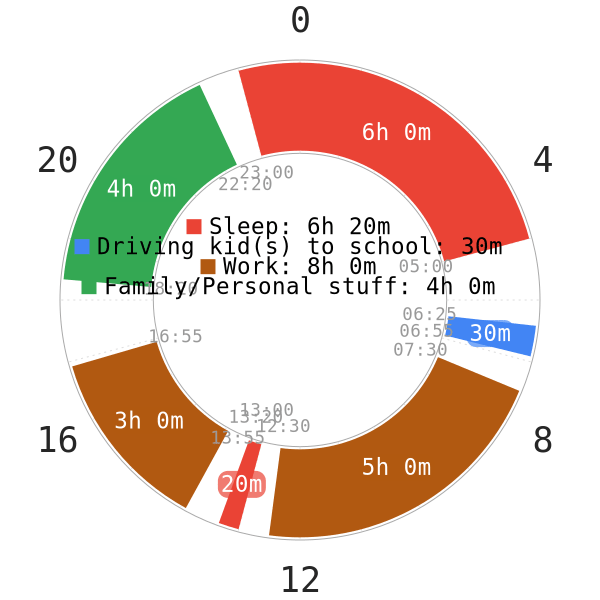
- Babies’ sleeping patterns can also change without warning. Therefore, you likely will have to skip your scheduled cores and naps.
- Managing social time will be very challenging. It is important to avoid scheduling a lot of daytime sleep blocks. However, if your daytime work schedule is more flexible, you may be able to schedule more than one daytime nap.
- If you really want to do a polyphasic schedule with a newborn, try to hold off until they are not waking several times during the night. Additionally, try an extended schedule with ample total sleep time. Examples include, but not limited to, E1-extended, Siesta-extended. Managing more simplistic sleep schedules also means you can slip up more often than more extreme schedules.
- Interrupted sleep at night coupled with daytime work schedule can be beyond exhausting.
Some Polyphasic Stories of New Parents
Even though it does appear impossible to be on any sort of consistent polyphasic schedules when you are a new parent, some parents actually pulled it off. Or at least, they did show that polyphasic sleeping can be a natural force when they need it the most. Check out a couple stories below.
An Everyman 3 Father
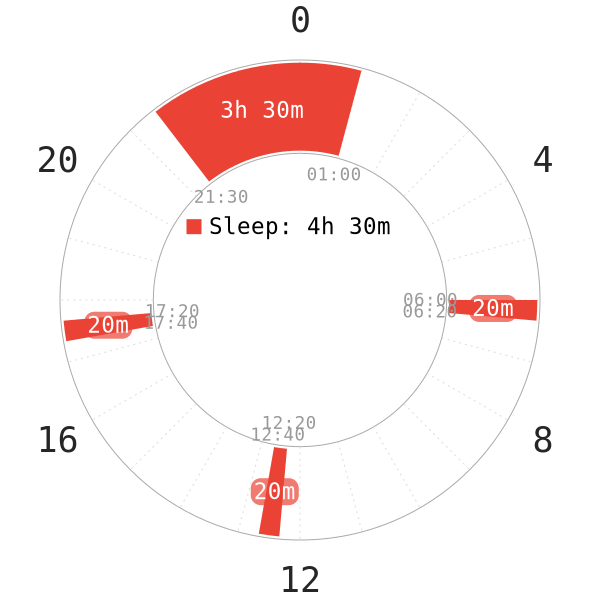
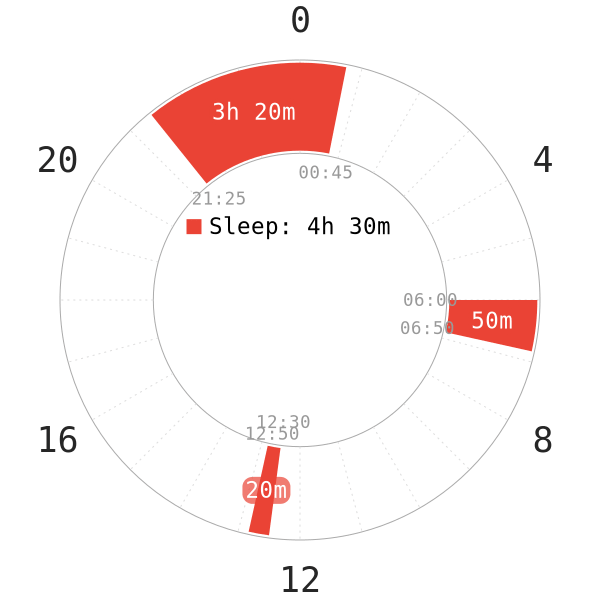
This father made a successful gradual transition from an adapted Everyman 3 to an Everyman 2-shortened. Although the conditions seemed to miraculously work out for him, it was still amazing commitment.
- He was able to take care of not only his newborn, but also his mother as well.
- In addition, he sustained a much higher level of productivity at work; he also remained on his Everyman 2 for at least 1.5 years.
An Everyman 2 Mother
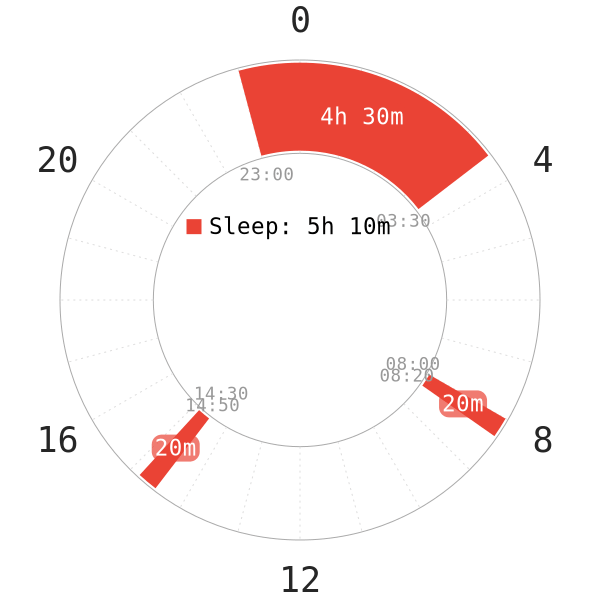
Obviously, we cannot leave out the stories of fantastic and loving new mothers either! Much as each of them has different lifestyles, polyphasic sleeping can still work for some. And this mother of two found the right condition to take up polyphasic sleeping. Her E2 variant was a standard one on this website.
- She interestingly noted that mothers may be naturally inclined towards polyphasic sleeping because of child-rearing responsibilities.
- Her lifestyle and activities were also mapped out in a whole day with her E2. This is potentially a great reference for other new parents who are trying to outline their own days.
- She has sustained the schedule for at least 4 months.
A SPAMAYL Mother
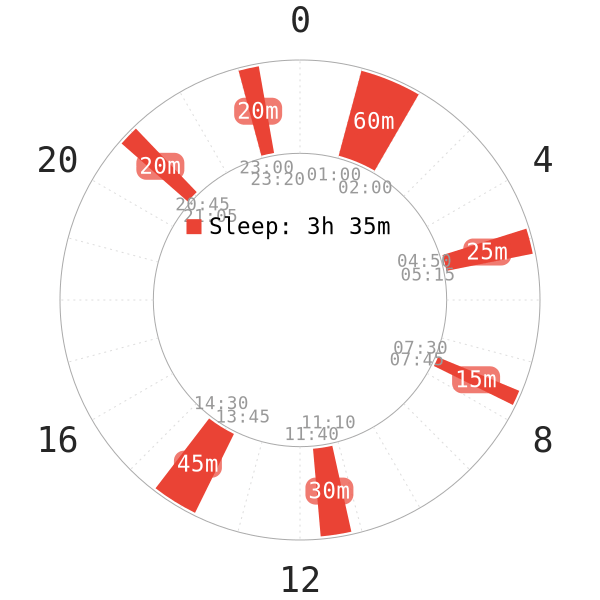
We know this example is a high-risk one. From the get-go, it is definitely dangerous if other parents try to pull this off because post-labor is mentally and physically exhausting. Thus, you definitely need to carefully consider your ability to muster up enough strength to even go through this kind of “adaptation”. Regardless, this new mother was quite an insomniac before her SPAMAYL attempt; she had great trouble initiating and maintaining sleep after delivery no matter what.
- At the time of her “natural” and possibly involuntary SPAMAYL attempt, she was still recovering from her labor.
- Despite her tenacious attempts to gain more sleep, she could not sleep more than ~1-1.5h at a time, regardless of what time in the day.
- Her SPAMAYL run only lasted for approximately 2 weeks before recovering on a stable Siesta pattern. This highlights the possibility that new parents can temporarily rely on a more extreme sleep schedule. This move did allow her to fulfill a lot of daytime responsibilities while having a lot of time to watch over her child.
- Since the attempt did not last too long, she was able to perform at her personal best on this sleep schedule for the whole 2 weeks. Again, her case speaks volumes about the possible usefulness of more radical sleep schedules. This is because her story is one of those “sustained operation” duties where affording a core sleep often appears impossible.
Other Parents
After your newborns have grown up a little, things definitely can ease up a bit for you. We are specifically taking about toddlers of at least 3 years old. Depends on whether you have babysitters, however, you may still have a very hard time putting a strict polyphasic schedule to work. Furthermore, there are always emergency situations lurking around the corner.
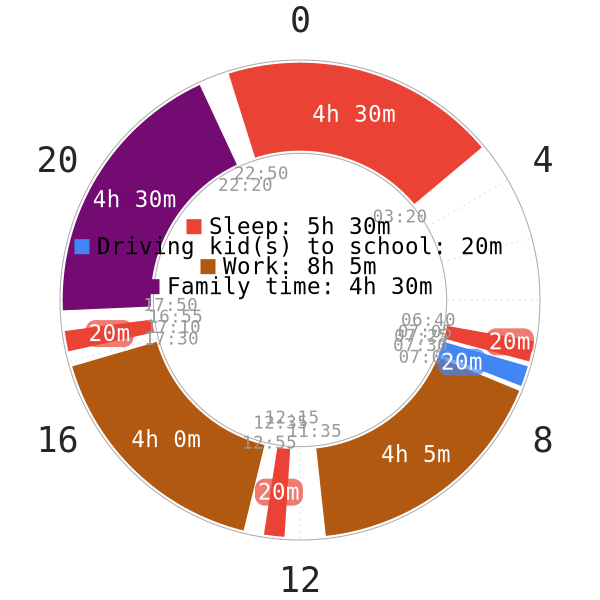
- If you do not feel like you can afford any complicated schedules, E1, Segmented or at most some kind of E2/DC1 is doable. Alternatives such as E3-extended may still work. Be sure to pay attention to your daytime nap(s), when everyone is awake.
- Because of school timing, you can take a short nap around sunrise hours before you drive your kid(s) to kindergarten/school. Since the nap is short, it is easier to arrange than a core otherwise. This also puts Everyman sleep at a more advantageous position than other multi-core schedules.
- If you are already retired, then that would open up even more options to pick from. As a result, hyper-flexible schedules like SEVAMAYL can suit you very well.
- Regardless of schedules you choose, be sure to eat well and relax enough. Yoga and meditation in general may be your best friends for relieving stress and anxiety.
Concluding Notes
Adopting polyphasic sleep while being parents is no simple task. As head of the household, you have to worry and even stress about a lot of things.
- Oftentimes, you have to stay awake for an extended period of time. This in return makes a lot of schedules impossible in the first place.
- However, short naps can still fit into the daytime very well if you can arrange time for them.
- Daytime core sleeps, unfortunately will not see much use due to the hassles of sleeping long in the day.
- If you are a new parent, try taking things easy on yourself. A polyphasic schedule does not guarantee a successful lifestyle and/or adaptation. Think carefully before you decide to try and enjoy its benefits!
- Flexibility of sleep times is a very powerful tool. You may want to have high enough of a total sleep so that you may afford to move your nap(s) around to a small extent while adapting.
- If your schedule is an extended version (mostly E1/E2-extended) to afford sports, then you may have a somewhat flexible daytime nap.
- Even if you do not reduce much sleep, a daytime nap is always a great boon to supplement your occasionally subpar core sleep quality.
Best of luck!
Main authors: Crimson & GeneralNguyen
Page last updated: 14 February 2021
Reference
- Wilson, Danielle L., et al. “Decreased sleep efficiency, increased wake after sleep onset and increased cortical arousals in late pregnancy.” Australian and New Zealand Journal of Obstetrics and Gynaecology 51.1 (2011): 38-46. [PubMed]
- Gulia KK, Kumar VM. Proper Sleep During Pregnancy for Mental Health of Newborn: An Evidence Based Appeal to Policy Makers. S. 2018;2(1):97-98. doi:10.1007/s41782-018-0038-9.
